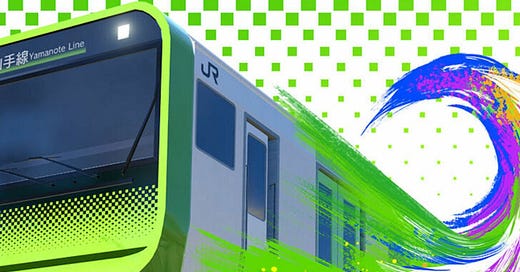Get ready for a revolution in public transit as Tokyo's Yamanote Line, the world's busiest train line, is testing its fully automated train service during rush hour traffic. With automatic train operation (ATO), the train is in charge of when to speed up, slow down, and come to a stop. A driver still sits at the wheel in case of emergencies, but the system's safety features have been honed over the last four years.
This groundbreaking technology has been in the works since Japan introduced the world's first fully automated train service over 40 years ago. In 1981, Japan became the first country to build a driverless commercial train line with the Cove airport liner. Since then, driverless trains have become increasingly popular worldwide, with many major cities adopting the technology.
Driverless metro systems have been particularly successful in Europe, where the first fully automated metro system was built in Lille, France, in 1983. The system was developed in response to a lack of drivers during a transportation strike. The driverless technology allowed the metro to continue running, and it was such a success that many other cities, including Paris and London, soon followed suit.
Despite the success of driverless trains in some parts of the world, not all public transit systems have adopted the technology. One major reason for this is the cost of implementation. Retrofitting existing trains with automation technology can be expensive, and it's often cheaper to keep human drivers. Additionally, there are concerns about safety and security, as well as a potential loss of jobs.
However, with advances in technology and a growing interest in sustainability, many public transit systems are now considering driverless trains as a viable option. They can run more frequently and efficiently, without the need for human drivers. Plus, they can help reduce carbon emissions and improve air quality.
The Yamanote Line's move toward driverless technology is an important step in this direction. It's a major urban railway that serves as a crucial model for automated transportation across Japan. As Japan's demographic changes with an aging population, driverless trains could become increasingly popular in the near future. And with staff shortages on the horizon, East Japan Railway is pushing toward automation.
The new system is being tested for the next two months to collect crucial data on how it impacts the passenger experience. So far, the reviews are positive - passengers couldn't tell it was automated at all, and the ride was very smooth. If it stays this way, Tokyo's automated train service is set to arrive right on schedule.







Thank you for the article. I first rode the Yamanote Line more than 40 years ago and have ridden it countless times since. The only thing I dislike about the Yamanote Line is using it to go to and from Shibuya Station; some type of construction has been underway at that station for years and I hope it ends soon. I am sure the automation of the Yamanote Line will lead to continued excellent service but I still enjoy seeing the station staff, conductors, and everyone else working diligently to ensure their passengers enjoy a timely and safe journey.